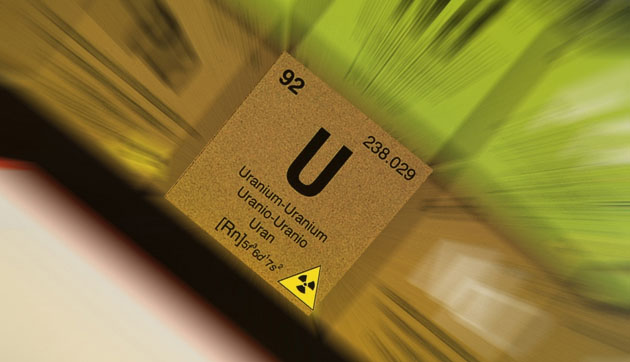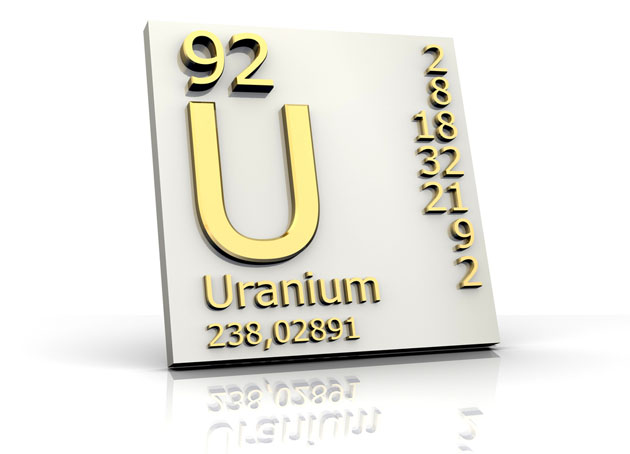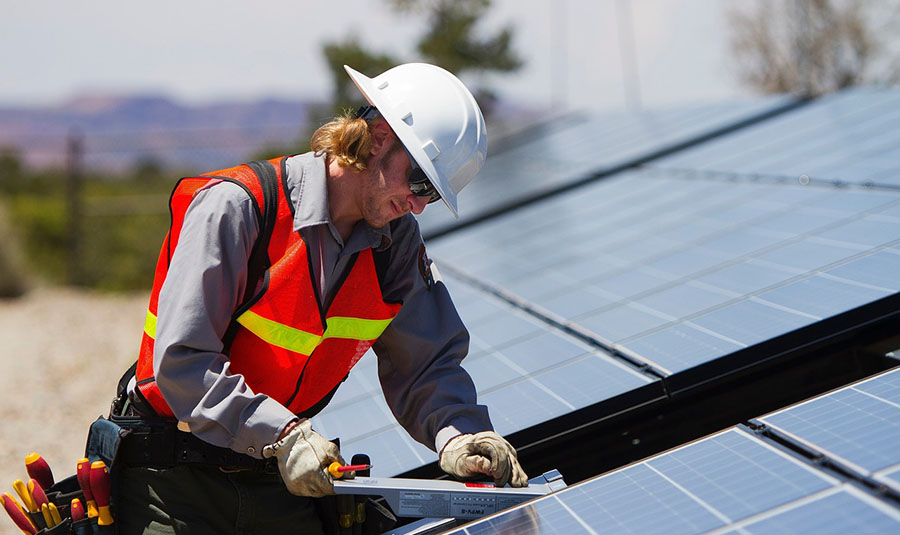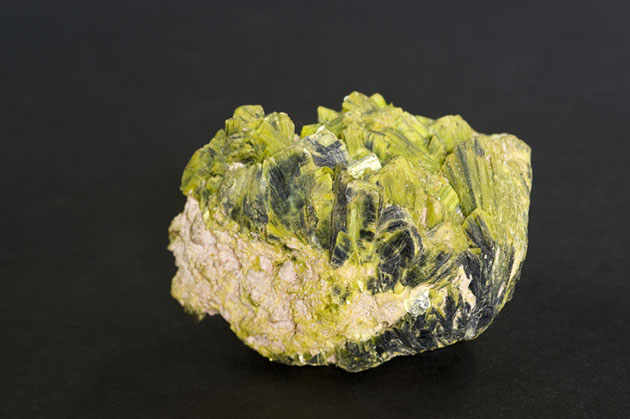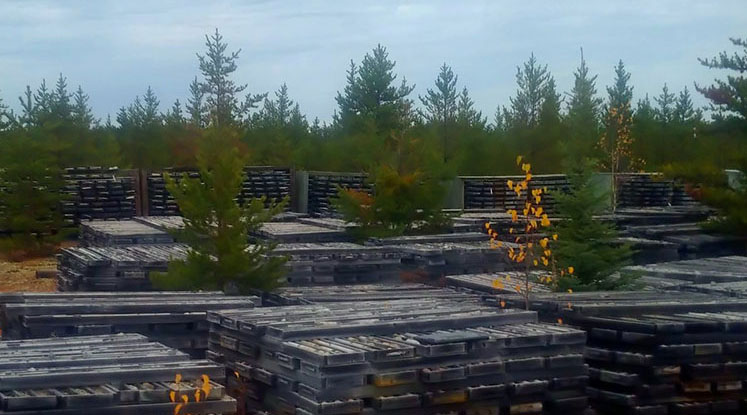People talk about peak oil, but there is also peak government take. How much more can the governments take? Look at Libya; it was taking more than 97% of oil proceeds. In Iraq, it's somewhere north of 92%. A company, after taking on all the exploration risk, gets about $4 for every $80 per barrel (bbl) in Iraq. That's a high government take. The risks are there.
Another thing you have to be careful of is that in some of the old deposits in Saudi Arabia, they are injecting a lot of water. The black swan in the oil sector could come in the form of technical difficulties. These deposits were found back when Elvis was at the top of the hits, so there is a risk that they could cave in, decrease production from these old fields and send oil soaring +US$200/bbl.
Also, look at places like Kuwait. America defended the people, but when I was there in December, I found that the American companies don't get any of the oil. The foreign oil companies can only get service contracts. Remember that 30 years ago one of Canada's most famous and well-loved prime ministers, Pierre Trudeau, nationalized the oil sector. Would it be a shock today if nationalization happened in other countries? That's another potential black swan. So, there are a lot of risks out there in the market. I think you are going to see equity asset deflation, which means these companies are going to get cheaper. I don't how low they will go, but using the lows of '09, I have come up with a few targets and some angles on how to play the sector.
Oil Sands
There are two types of projects in the oil sands: open pit and steam-assisted gravity drainage (SAGD). Major production currently is coming from the open pit. These are the big massive holes utilizing more than 300-ton trucks, the largest shovels on the planet. It is a very high-cost exploration. The attraction of a SAGD project is you don't have a big pit. You don't need all those big trucks. But production isn't coming the way people have planned. This is really important to understand.
So, why are the oil sands such a major part of the American energy solution? The Americans get more oil from Canada than any other trading partner. The planned Keystone Pipeline expansion would carry Canadian crude oil from Alberta to Texas and deliver almost twice as much oil to the refineries on the Gulf Coast than the 465,000 barrels (Kbbl)/day Iraq is sending. Mexico's exports are declining; it will soon be a net importer. Saudi Arabia is declining at more than 3%. In Venezuela, Chavez is using most of the oil to balance his budget. That is why the oil sands are important—they are a secure, friendly source of oil for Americans.
Companies that already have production need around $45–60/bbl oil to break even. Any new production from the oil sands is going to be north of $80/bbl. But big oil sands companies with existing production can be very profitable at that price. And this is why I propose it as a solid opportunity.
The Top Five Oil Sand Producers:
- Suncor Energy Inc. (SU:TSX.V; SU:NYSE) was trading at a 52-week high of $46/bbl. It's trading around $32/bbl now. Its price-to-earnings ratio (P/E) is 13. What is more important is it is producing more than 300 Kbbl/day. It has a capacity to about 900 Kbbl/day. That is well over twice what you get from Iraq. It could go to $20; I would really line up to buy this stock at that price. In the meantime, I would put in a buy at around $22, I would sell a put, collect about 4-5% by February and if it goes to $22, I'm happy owning Suncor at $22. But if it doesn't go to that point, I collect about 4.5% by February by selling a put. Remember, volatility is your friend. So is it possible that a stock that is Canada's largest oil company could go from $46 to $20? Without a doubt. It could go to $15. If oil goes down to $40, Suncor doesn't make money. That's really important to understand. The oil sands are a stable, secure reliable production of oil, but it is very high-cost oil. So be careful. I wouldn't jump in and buy my 100% desired allocation today. I would nibble. It's appetizer time. If, in six months, we are wrong and things get corrected, I'd probably sell because I don't think the American economy can handle $100/bbl oil. In the long run, I'm very bullish on the price of oil, but in the near term, I'm pretty bearish. Other big oil sand producers are:
- Imperial Oil Ltd. (IMO:TSX; IMO:NYSE.A)
- Canadian Oil Sands Trust (COS.UN:TSX)
- Royal Dutch Shell Canada's (RDS.A:NYSE; RDS.B:NYSE) Cenovus Energy Inc. (CVE:TSX; CVE:NYSE) is one we have had a good win with in the newsletter. I am going to propose now that you take profits on Cenovus mainly because it has not been hit as significantly as the others. Its P/E is trading well over 25 times. So if it came down to it, I really like Cenovus, but I think you are going to have a bigger upside owning Suncor at my recommended buy price than holding Cenovus today. The problem with Cenovus is the SAGD. We've had a big win with Cenovus, but it's time to sell Cenovus and look at getting into Suncor at C$22/share.
Green Energy
Geothermal has been the most disappointing sector of my career. What went wrong? I have asked myself this every day. I call Ormat Technologies Inc. (ORA:NYSE), Alterra Power Corp. (AXY:TSX), Ram Power Corp. (RPG:TSX) and Nevada Geothermal Power Inc. (NGP:TSX.V; NGLPF:OTCBB) the Unfantastic Four. They were undercapitalized, but when we looked at the value, the cash flow models, the Power Purchase Agreements, it was very seducing. These things were so cheap on paper, but because they were undercapitalized, management wasn't able to truly execute the business plans. Ram Power had massive value in the P90s (90% Probable), but major drilling problems. Nevada Geothermal built a $200M plant that cost more than planned—lack of execution. Then production was less than planned. A lot of things went wrong.
What is next? What's going to happen in this sector? Consolidation. You are going to see all these geothermals come together. They are going to have to bite the bullet and realize that they have to do something, namely merge. You will possibly see a North American geothermal company and an international geothermal company. Now, why do I think this is important? An oil company can handle the large financial expenditures. Drilling is very expensive. You can't just drill two or three wells. You need to drill 10 wells in that one region vs. the one that has been happening up to this point. Someone like BP or Exxon can afford to do that expanded drilling for promotional reasons to say, "We are the world's largest geothermal producer." That is what is going to happen.
But where is the upside? These companies are going to get cheaper before it gets better. You are going to have tax loss selling. Look at Ram Power and Nevada Geothermal, a lot of selling pressure will come during tax loss season. I would wait until the tax loss selling comes, if you want to buy on weakness.
Solar and Biofuel
I just don't think that they are going to fly, as investments. The 2013 Department of Energy grant program is going to be changed. The government doesn't have the money for this even though Obama says by 2030, 80% of electricity generated in America will be green.
In the wind sector, you may want to look at Sprott Power and Alterra Power. Let's face it. Ross is the king of the green sector right now when it comes to the juniors. He has the cash. He can also go out and raise the money based on his past successes. Nevada Geothermal can't, and I don't think Ram can go out and raise the money that it was able to do three years ago. AXY will be the consolidator in the junior geothermal sector.
Uranium
When it comes to uranium, grade is king. The Athabasca Basin is the highest-grade uranium production on the planet, but you need access to a mill. Last summer, we published an alert on Denison Mines Corp. (DML:TSX; DNN:NYSE.A) at $1.20 and it went to $4 and change; we told you to sell, and it's now a Casey Free Ride. Hathor was also a very big win for our subscribers. Now we only really have Cameco Corp. (CCO:TSX; CCJ:NYSE) left. It's still the world's largest pure producer of uranium. I would look to buy under $18, if you really want to be savvy and patient, under $15.
The uranium sector is not dead. It is only going to get better. Why? Well, a year ago we speculated that the Wheeler Deposit would be big. Wheeler has now completed a year of drilling and we know it is going to be big. The interesting thing is that Hathor is trading at a bigger market cap than Denison. Hathor doesn't have a producing mine. It doesn't own access to a mill; Denison does. So if you ask me, "Would you rather own Hathor or Denison today?" I would rather own Denison. We have had our win with Hathor. Cameco wants it, give it to them. And you will probably see more upside with Denison.
If you want a high-risk play in the Athabasca Basin, you could have bought Fission Energy Corp. (FIS:TSX.V; FSSIF:OTCQX) in the private placement or in the open market. I think that to really grow the Hathor deposit, Fission does play a role in there. That is a very high-risk play. It is exploration. It doesn't have any cash flow.
So the three companies in the Athabasca Basin that should be on your radar are: Denison Mines, Cameco Corp. and Fission Energy.
Just like in the oil sands, you have two types of production. Conventional production requires open pit or underground mining, moving rock, taking it to a mill, crushing it and producing yellow cake. In situ recovery (ISR) is a much cheaper cost of production. I think you are going to see a consolidation within the U.S. near-term producers. Uranium One Inc. (UUU:TSX) has been a very poor performer. Uranium Energy Corp (UEC:NYSE.A) is on the Casey Next Ten list, and also on the Ten Bagger List. Uranerz Energy Corp. (URZ:TSX; URZ:NYSE.A), Ur-Energy Inc. (URG:NYSE.A; URE:TSX) and Strathmore Minerals Corp. (STM:TSX; STHJF:OTCQX) are the players. If I was a person looking to invest in the concept that there will be a consolidation within the ISR in the U.S., I would look at owning Uranium Energy, Uranerz Energy and Ur-Energy. I think Ur-Energy and Uranerz are potential takeover candidates. Uranium Energy Corp (UEC), led by Amir Adnani, has been a successful low-cost producer, and the company that has executed its business plan in the U.S. on the time schedules they said they would. Other companies have not.
Uranium Energy is a Casey Free Ride. We have recommended the company a few times and have taken profits a few times. CEO Amir Adnani has done everything he said he would. So if there is a major market correction within the next six months, I would love to own Amir at $1-1.25. It is hovering between $2.80-2.25. We are in a trading range.
I would stay away from uranium in Australia right now because of the politics. It is a massive area, just like Kazakhstan. But the companies there have horrible structures, and they are still very expensive. Africa is a lower grade, but the problem there is high energy costs, high capex. I would stay away from there also. We are also not going to be recommending any uranium in Europe right now.
Unconventional Oil and Gas
Unconventional shale oil and gas is the biggest story in the oil and gas sector in the last 10 years. It really was a game changer. In the U.S., you had the Haynesville, Marcellus, the Bakken, all of these areas that got a lot of attention from the market and with that comes the NGOs and the protestors and all the misinformation. But the fact is, the publicity will make it harder to produce these fields. Recent moratoriums show that politicians will go with the squeakiest wheel even though they are not listening to the science. A few years ago, we went through this with the coal bed methane sector. That is a much shallower drilling, much closer to the water reservoirs, and shale is much deeper. So the science proves that it is going to be OK, but you have to go through the education and regulation process.
I think your big upside is going to be in new areas. Remember Cuadrilla Resources Ltd., which was a big win for our Casey subscribers? It just found over 200 trillion cubic feet under the Lancashire Basin, which will be enough gas for all of the United Kingdom for many decades. Look at management teams that have done this before and know the technology. Look for companies with major cash and watch what the insiders are buying. They are not just promoters standing there talking about it. Tag Oil Ltd. (TAO:TSX.V) is spending $100M in New Zealand and East West Petroleum Corp. (EW:TSX.V) is bringing in a big Serbian company to develop its assets. It has $0.36/share cash, and insiders are buying. It has 1 million acres in Romania that look pretty interesting. That is what you want: management teams who own the stock, but use other people's money.
High-Impact Exploration Plays
Pay attention to ShaMaran Petroleum (SNM:CVE) in Kurdistan. It's a Cash Box. I think buying this under $0.45 is a pretty interesting buy, very high risk, but they are high-impact wells. My biggest disappointment right now is in Indonesia. Niko Resources Ltd. (NKO:TSX) is drilling a third of the world's high impact wells. It has major partners and it is a very smart group. I think you can get this one under $45 and be patient. It has been really oversold and it got caught "bribing" in Pakistan to get permits.
We have talked about and bought and sold Africa Oil Corp. (AOI:TSX.V) three times. As things get cheaper, you'll be able to get Africa Oil a bit cheaper. Remember as companies get closer to drilling a well, the stock will go up and you want to take profits. The highest-risk story is Horn Petroleum Corp. (HRN:TSX). It is a Lundin company and it's either going to be a major win, or it's going to go down significantly.
The largest onshore oil deposit in all of Europe is in Albania. It is owned by a company called Bankers Petroleum Ltd. (BNK:TSX). It is a multibillion dollar market cap company that has taken a beating lately. It went from $9 to $3, but it earned just over $10M in Q211. A company that is a much better buy with much more upside in Albania than Bankers Petroleum is Stream Oil and Gas Ltd. (SKO:TSX.V). It has a lot of hidden assets. It has made about four times less money in Q211 than Bankers, but it's market cap is 20 times less. It is a great value. It has a good management team, with a lot of organic growth to come in the next 18 months. I own it; I want to own more of it, and like it a lot.
North American Oil and Gas
Be patient. Don't rush into anything. I don't see gas prices in North America changing substantially in the next year. The next big thing here will be consolidation. Changes in Canadian tax law have changed the game. You need to be north of 10,000 bbls in Canada to be taken out right now. Small, North American oil and gas producers are going to have to find a way to grow without increasing gas prices.
This was a summary of Marin Katusa's remarks. For the complete audio collection of the Casey Research/Sprott Inc. Summit "When Money Dies," click here.
Investment Analyst Marin Katusa is the senior editor of Casey's Energy Report, Casey's Energy Opportunities and Casey's Energy Confidential. He left a successful teaching career to pursue what has proven an equally successful—and far more lucrative—career analyzing and investing in junior resource companies. Katusa's insightful research has made his subscribers a great deal of money. Using his advanced mathematical skills, he created a diagnostic resource market tool that analyzes and compares hundreds of investment variables. Through his own investments and his work with the Casey team, Katusa has established a network of relationships with many of the key players in the junior resource sector in Vancouver.
Want to read more exclusive Energy Report interviews like this? Sign up for our free e-newsletter, and you'll learn when new articles have been published. To see a list of recent interviews with industry analysts and commentators, visit our Exclusive Interviews page.
DISCLOSURE:
1) The following companies mentioned in the interview are sponsors of The Energy Report: Uranium Energy Corp., Uranerz Energy Corp., Fission Energy Corp., Ram Power Corp., Royal Dutch Shell PLC and Strathmore Minerals Corp.
2) Marin Katusa: I personally and/or my family own shares of the following companies mentioned in this interview: Nevada Geothermal Corp., East West Petroleum Corp. and Stream Oil and Gas Ltd. I personally and/or my family am paid by the following companies mentioned in this interview: None.




